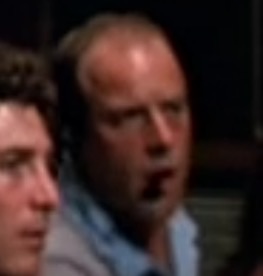
Halldór also made some brilliant orchestrations for the section leading up to the end, where the song dissolves into some kind of controlled chaos. But once the song started taking shape in the studio we felt we wanted to add a little outro, and Einar and our producer Halldór made this beautiful slowed down alternative version of the chorus. The song’s structure wasn’t completed though until we met in a garage in Reykjavík and just jammed the mid section. I had this idea for an opening riff and a vocal melody that I sent Einar and he promptly turned it into half a song by adding a verse and a mid section. Most of the songs were written by sending ideas over the internet as Einar was largely based in Norway at that time and I was in Iceland. “Dulsmál was the last song we wrote for the album. Here’s how Guðmundur ‘Gummi’ Pálmason feels about the inspiring, creative liaison with Einar, and the fruitful writing process for Dulsmál: They managed to narrow it down to two totally different songs but then decided to go with the closing song of the album, Dulsmál, that can now be streamed here: KATLA say they had a ‘huge luxury problem’ when choosing the 3rd and last song to preview from their upcoming album Móðurástin. Check out the sneak preview for their epic song “Dulsmál” from the upcoming album “Móðurástin”. KATLA are back once more with the third mighty eruption of their Icelandic metal volcano. The result proves the Icelanders right: “Allt þetta helvítis myrkur” is an emotional tour de force – cinematic, dark, heavily emotional, and utterly mesmerizing. “Everything is homemade yet up to our high standards.” This DIY-approach also applies to production as Einar was responsible for all recordings, mix, master, and cello-samples. “We like to keep things in the family”, Guðmundur Óli points out.

Cover art, photography, and the handwritten booklet – everything about “Allt þetta helvítis myrkur” has either been created by the duo or by their relatives and close friends. KATLA take their art very personally even beyond musical aspects. “ KATLA are as much a product of our environment as derived from our state of mind.” “The outer landscapes are as important to us as the inner darkness”, tells Einar. The duo deliberately took their name from one of the most active and feared Icelandic volcanoes to manifest that the external part of their inspiration relates to the islands ever-changing landscapes and subpolar climate. KATLA are the conceptual and musical brainchild of vocalist and multi-instrumentalist Einar Thorberg Guðmundsson (FORTÍÐ, POTENTIAM) and former SÓLSTAFIR-drummer and visual artist Guðmundsson Óli Pálmason.

The result is a cinematic musical stream of consciousness, in which many of the songs intertwine and flow into each other. Some of this album’s core composition reach back in time for more than a decade and were born out of spontaneous rehearsal room-sessions that were only now given final shape. The soul crushing heaviness fueling this record makes KATLA‘s melancholic debut album “Móðurástin” appear nearly light-hearted by comparison. An urgent sense of darkness and inner turmoil drives “Allt þetta helvítis myrkur” (“All this damn darkness”), the second full-length of the Icelandic duo. KATLA artistically translate this meteorological depression into dark doom-infused metal and deep musical emotion. This will make it easy to dial back just a little bit to the point where you were making solid contact, and just like that you’ve found your perfect tempo.Īlso, keep in mind that your tempo could be different from round to round, and you may even need to adjust mid-round.The infamous Icelandic low is defined as a large and persistent atmospheric low-pressure centre that forms between Iceland and Greenland and is often the cause of strong winter winds over the North Atlantic. As you get to faster speeds, the moment when you start to make off-center strikes will be an indication that your tempo is off and you might be swinging too fast.

Hit some drives at 50 percent speed, then 75 percent and so on, while maintaining consistent contact in the middle of the face. Mark recommends starting slower to find the sweet spot and working up from there. Now, instead of hitting the ball farther, they actually lose distance because they didn’t find the center of the clubface. However, when this happens their swings get out of sync, they loose a good rhythm and tempo, which causes off-center strikes on the clubface. Mark explains that many times when he plays in Pro-Ams, golfers will really try to crank it up and swing harder and faster in an attempt to gain distance.


 0 kommentar(er)
0 kommentar(er)
